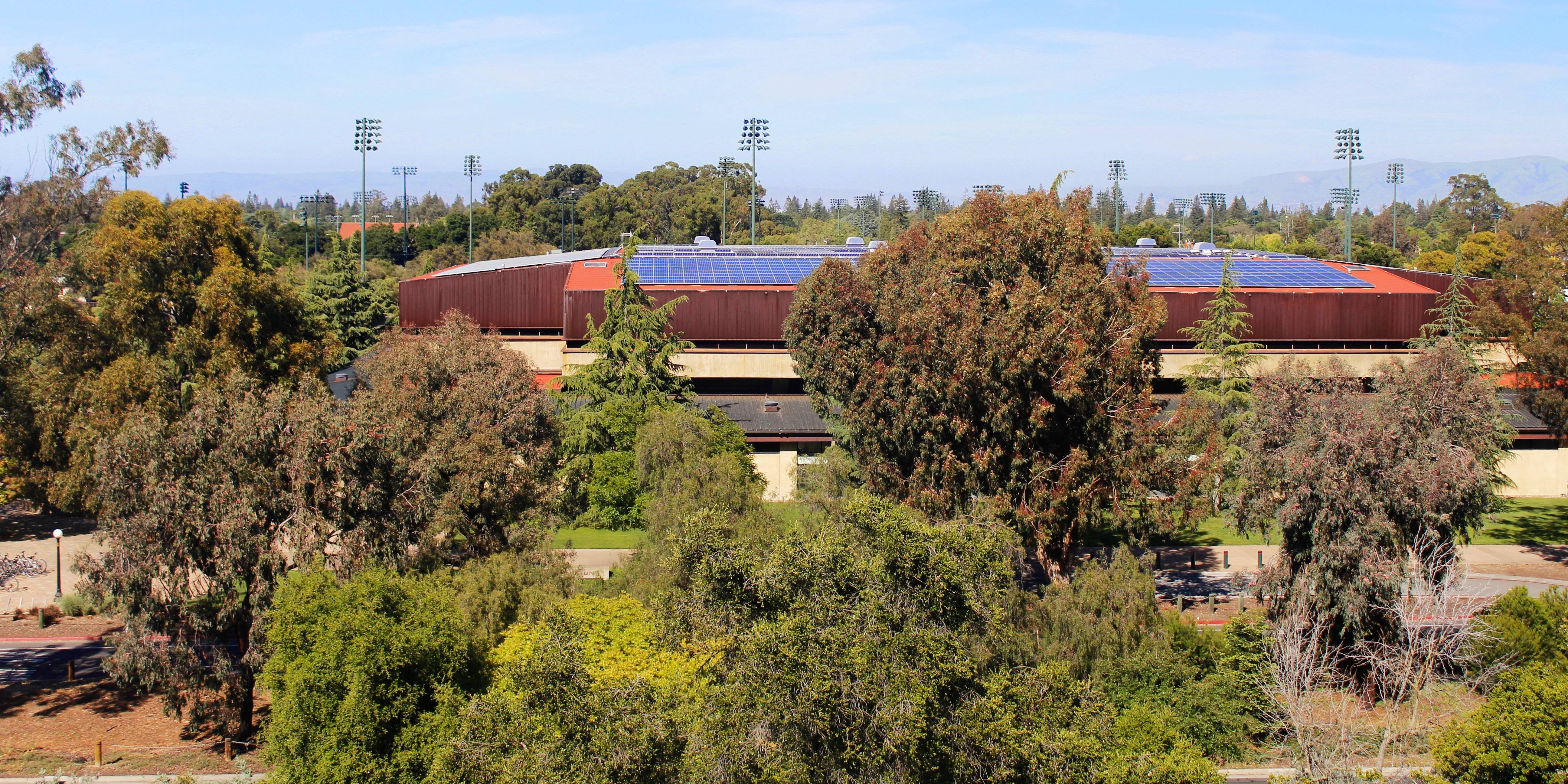Over the past nine months, 15 Stanford buildings have added new solar photovoltaic panels. These new installations include Bing Concert Hall, Maples Pavilion and Hansen Experimental Physics Lab. Thanks to the new solar panels on these buildings, Stanford’s electric distribution system will receive about 4.5 added megawatts of power.
In 2012, Stanford began a project directed by the Department of Sustainability and Energy Management to increase the prevalence of renewable energy resources on campus. In total, the University now has 32 buildings that provide solar energy.
“It has been an evolution over time,” said Scott Gould, a senior energy engineer at Stanford. “This is not a one-off program. It is part of a larger design to reduce Stanford’s greenhouse gas [emissions].”
Gould also emphasized that the construction is only one part of Stanford’s commitment to sustainability.
“It’s an important point to make that conservation, or energy efficiency, is … the step before adding new production,” Gould said. “Efficiency may not get quite as much interest, but it is still a critical part, and it is something that Stanford is doing a lot.”
Approximately 70 buildings were surveyed as new locations for solar panels, but they had to meet certain criteria in order to be approved. First, the buildings had to have flat roofs and long sunlight hours to maximize the efficiency of the photovoltaic panels. Additionally, the solar panels had to be integrated into the design of the buildings and aesthetic of the campus.
“There is a very architectural solution to installing the [photovoltaic panels (PV)] that does not make it look like an afterthought,” Gould said.“We’ve been working with the campus architect Dave Lenox, who has been a great ally because he and his team have a really great aesthetic eye. The PV that we install, we want to make fit with Stanford.”
Solar history
Stanford’s photovoltaic initiative began in 2002 with separate projects at the Jasper Ridge Biological Preserve and at Synergy house, a student residence on campus. In 2008, the Jerry Yang and Akiko Yamazaki Environment and Energy Building (Y2E2) became the first building on Stanford’s main campus to receive photovoltaic panels. Today, the Knight Management Center is the largest source of solar power on campus.
Synergy’s incorporation of photovoltaic panels is one part of the house’s strong commitment to the environment, according to Skye Mooney ‘17, the residence’s community manager. In addition to using solar panels, the house also has its own garden and composting system and sources as much food as possible from local producers such as the O’Donohue Family Stanford Educational Farm.
David Dinter ‘76, who lived in Synergy while at Stanford, described the house’s “long history with solar” in an email to Mooney that she shared with The Daily.
“The first panels on the old house were built and installed by an engineering student, Charles “Chuck” MacLennan (Chuck) Pike, with enthusiastic assistance of many other residents,” Dinter wrote. “They originally provided hot water only for the third-floor bathroom, so it all began with Stanford’s first solar-heated co-ed shower.”
The Future of Solar
To install its solar panels, Stanford worked with SunPower Corps, the solar energy company that originally executed the project to create the Stanford Solar Generating System. The rest of Stanford’s energy comes from California’s power grid.
California as a whole is increasingly exploring renewable energy options. Stanford now receives 53 percent of its energy from off-campus photovoltaic panels. Combined with the existing main campus solar panels and the new panels on 15 buildings, a total of 65 percent of Stanford’s energy is produced from photovoltaic projects.
When asked how Stanford can promote renewable energy initiatives nationally, Gould highlighted the importance of innovation — not just in terms of technology and construction, but also in areas such as financing.
Gould explained that it can be difficult for nonprofits to find funding for photovoltaic projects, as they do not receive the tax credits that other businesses and homeowners do.
According to Gould, Stanford was able to partner with SunPower so that the solar project could receive tax credits. The University has a power purchase agreement and does not actually own the photovoltaic modules, while SunPower produces the photovoltaic modules and secures financing. Thus, Stanford just pays for the energy that the modules produce.
“[Nonprofits] like Stanford and junior colleges and other colleges need creative ways to implement projects,” Gould said.
Gould also stressed the importance of constructing new buildings to be PV-ready. The Bing Concert Hall was designed in this way, and Gould said that installing solar panels without the building’s particular composition would have been nearly impossible.
Though Stanford’s photovoltaic system continues to grow and improve, the University is already exploring other options to reduce its carbon footprint. One option under consideration is a high-voltage transmission line that would connect Stanford, the City of Palo Alto and the SLAC National Accelerator Laboratory. The line would lower electricity costs, reduce water use and increase system reliability. In combination with photovoltaic projects, these efforts are expected to reduce Stanford’s greenhouse gas emissions by 68 percent.
Stanford also plans to add new electric charging stations for vehicles on campus and to add more building-integrated photovoltaic systems.
“The expectation is always that we do more,” Gould said. “I think the students want more. I think the faculty wants more. The staff and the Board of Trustees, they want more.”
Additionally, Gould added that students, faculty and staff can help drive new renewable energy initiatives, a sentiment that Mooney echoed.
“It’s pretty crazy what you can do and what the University is willing to support with a good idea and good planning,” Mooney said.
Contact Sophie Stuber at sstuber8 ‘at’ stanford.edu.
